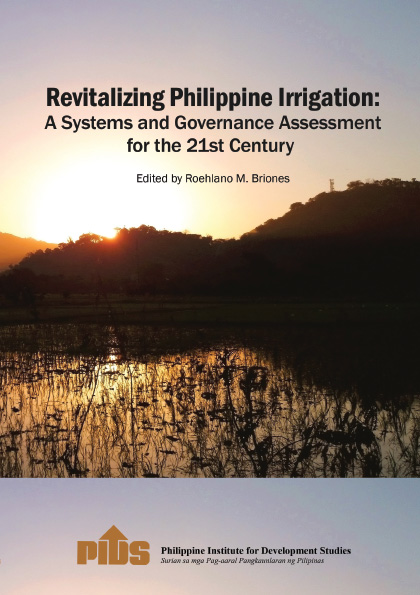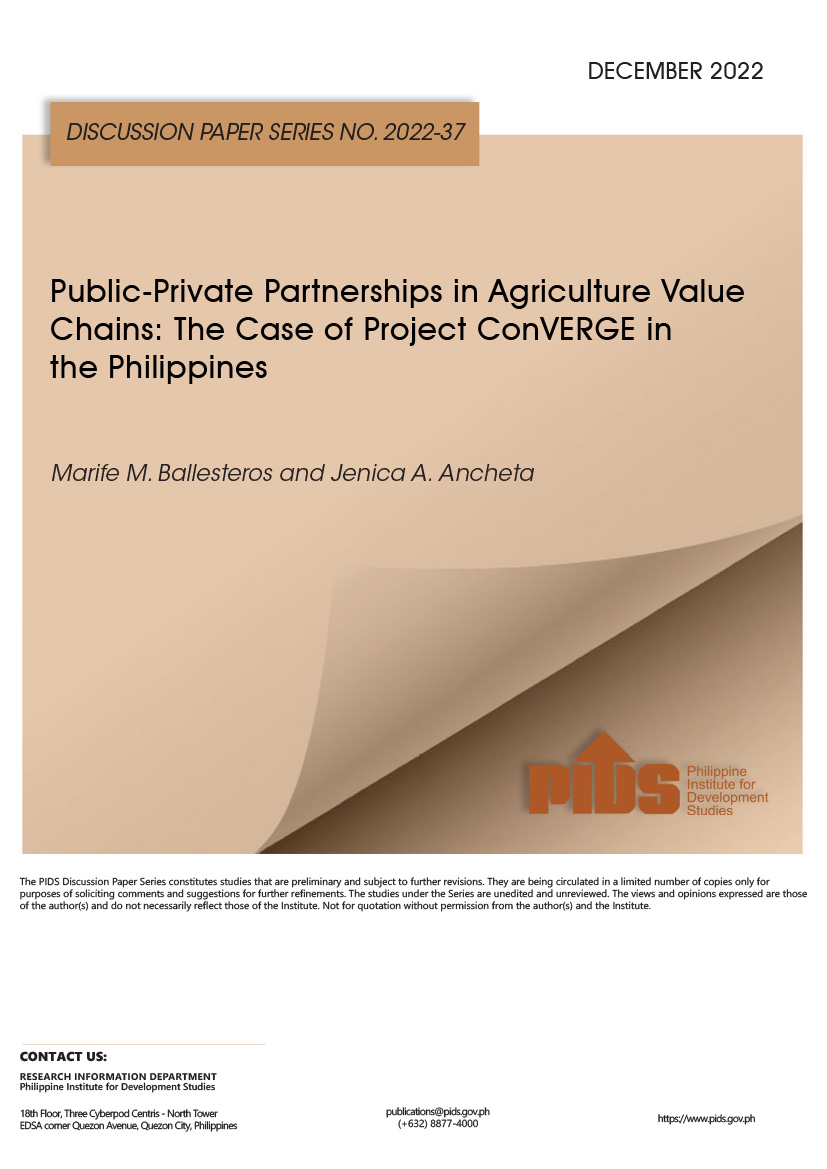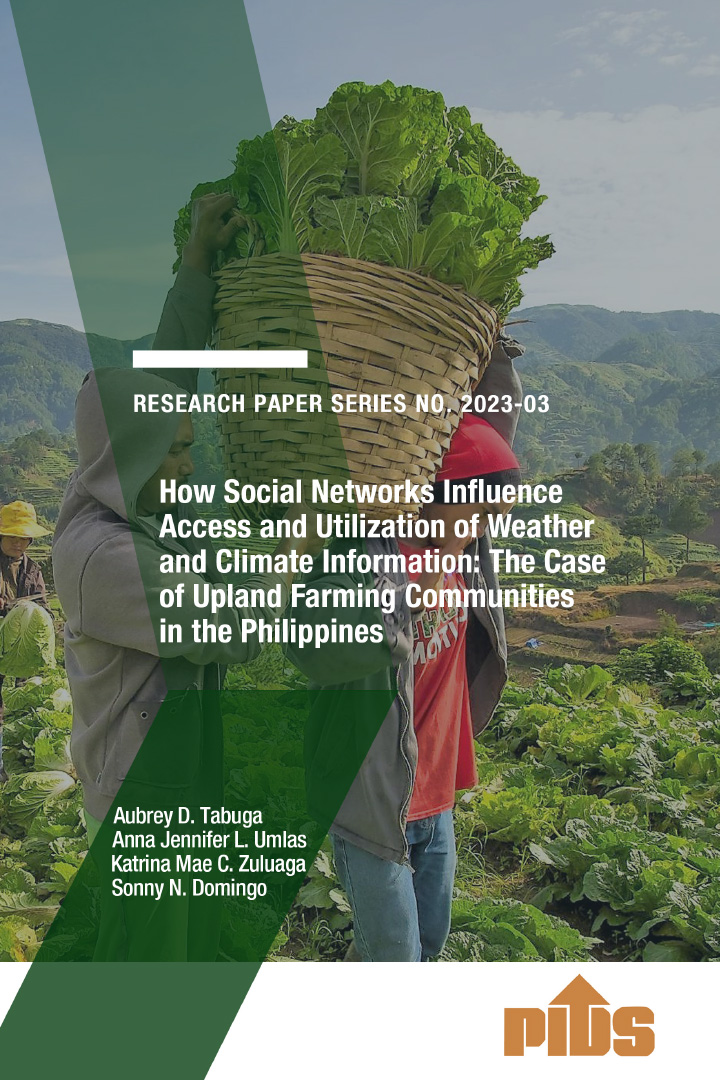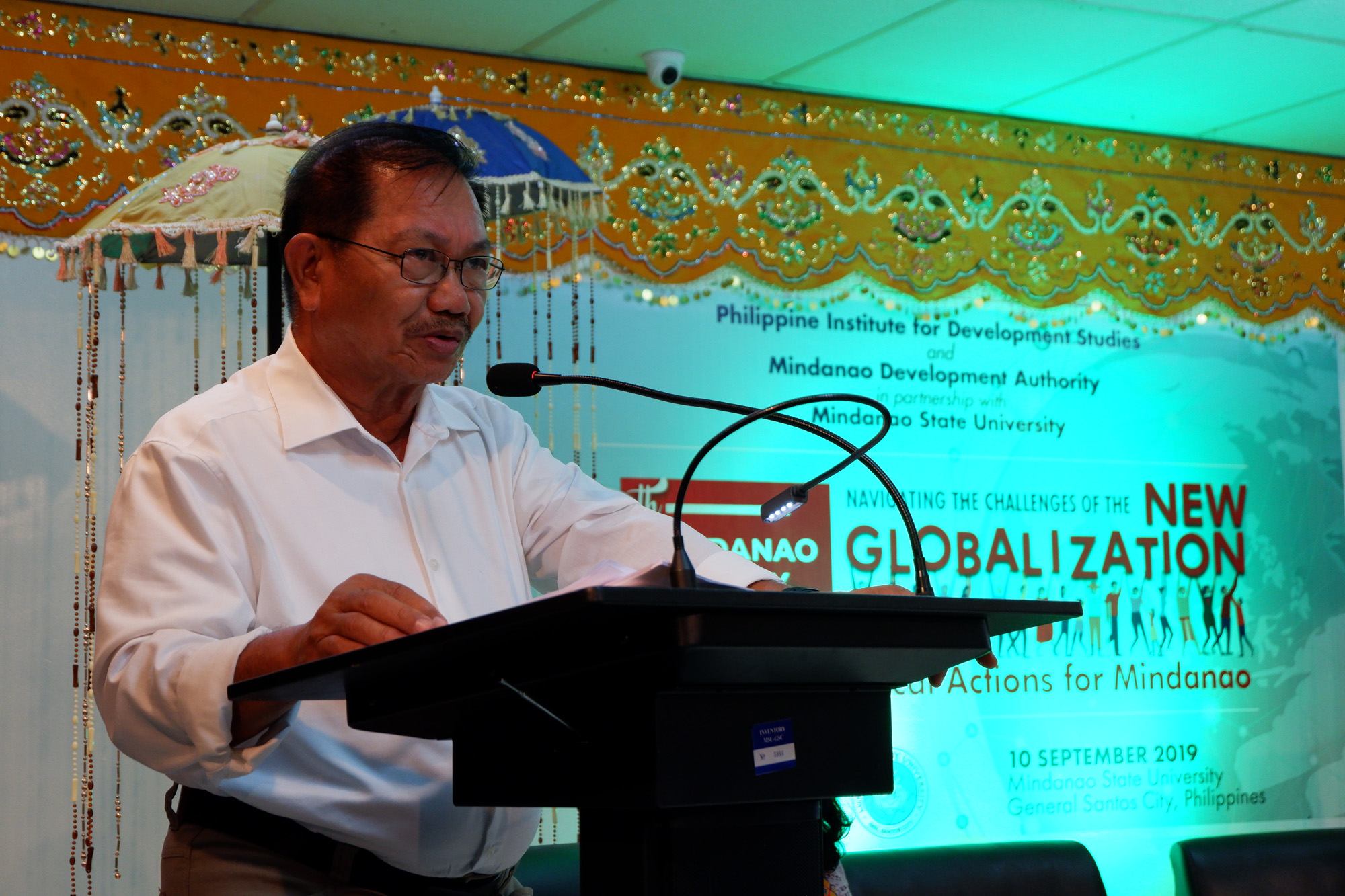Linking small farmers to modern markets, whether domestically or for export, increasingly entails participation in modern supply chains coordinated by contract farming. Concerns have been raised regarding the possible disadvantages from contract farming facing small farmers. Most empirical work points to a positive correlation between participation in contract farming and net farm income. Such a correlation fails to correct for endogeneity of participation; few studies have performed multivariate analysis with such a correction.
This case study, based on a survey of smallholders in the tobacco industry, seems to be the first such application for the Philippines. The study finds that, correcting for endogeneity, participation in contract farming causes a sizable increase in farm profitability; moreover, participation appears to be biased toward smaller farm sizes. The findings are robust to the econometric method used and even definition of participation. This is further evidence to confirm that supply chains linking agribusiness with small farmers via contract schemes are a viable model of value addition and inclusive growth in rural areas. Policies should be implemented to support an enabling environment for expansion of supply chains.
Citations
This publication has been cited 23 times
- Bellemare, Marc. 2018. Contract farming: opportunity cost and trade offs. Agricultural Economics, 49, No. 3, 279-288 . International Association of Agricultural Economists.
- Bellemare, Marc and Jeffrey Bloem. 2018. Does contract farming improve welfare? A review. World Development, 112(C), 259-271. Elsevier.
- Bhanot, Disha, Vinish Kathuria, and Debabrata Das. 2021. Can institutional innovations in agri-marketing channels alleviate distress selling? Evidence from India. World Development, 137(C). Elsevier.
- Bonjean, Isabelle. 2019. Heterogeneous incentives for innovation adoption: The price effect on segmented markets. Food Policy, 87, 1-1 . Elsevier.
- Bonjean, Isabelle. 2018. Heterogeneous incentives to innovation adoption: the price effect on segmented market. Working Papers 279295. Katholieke Universiteit Leuven, Centre for Agricultural and Food Economics.
- Gao, Yang et. al. 2017. Resource basis, ecosystem and growth of grain family farm in China: Based on rough set theory and hierarchical linear model. Agricultural Systems, 154(C), 157-167. Elsevier.
- Gatto, Marcel. 2017. Oil Palm Boom, Contract Farming, and Rural Economic Development: Village-Level Evidence from Indonesia. World Development, 95(C), 127-140 . Elsevier.
- Ignowski, Liz and Bart Minten. 2021. Agricultural transformation, technology adoption and inclusion of small farmers: the case of dairy in East Africa. Discussion Papers 42621. LICOS - Centre for Institutions and Economic Performance.
- Kuhl, Laura. 2018. Potential contributions of market-systems development initiatives for building climate resilience. World Development, 108(C), 131-144. Elsevier.
- Malak-Rawlikowska, Agata and Dominika. 2016. Relacje rolników z dostawcami środków produkcji – na przykładzie sektora mleczarskiego w Polsce. Village and Agriculture (Wieś i Rolnictwo), 2, No. 171 . Polish Academy of Sciences (IRWiR PAN), Institute of Rural and Agricultural Development.
- Martins, Franco Müller, et. al. 2021. Impact of buyers' support on farmer performance and investments in the Brazilian pork supply chain. International Food and Agribusiness Management Review, 25, No. 1. International Food and Agribusiness Management Association.
- Matthys, Marie-Luise, Sushant Acharya, and Sanjaya Khatri. 2021. “Before cardamom, we used to face hardship”: Analyzing agricultural commercialization effects in Nepal through a local concept of the Good Life. World Development, 141(C). Elsevier.
- Medina, Gabriel et. al. 2015. Development conditions for family farming: lessons from Brazil. World Development, 74(C), 386-396. Elsevier.
- Muraoka, Rie et. al. 2021. Climate risk and agricultural technology adaption: evidence from rice farmers in the Ayeyarwady river delta of Myanmar. International Association of Agricultural Economists.
- Navarra, Cecilia. 2017. Contracts between smallholders and private firms in Mozambique and their implications on food security. WIDER Working Paper 2017-197. World Institute for Development Economic Research (UNU-WIDER).
- Ogutu, Sylvester Ochieng, Dennis Ochieng, and Matin Qaim. 2020. Supermarket contracts and smallholder farmers: Implications for income and multidimensional poverty. Food Policy, 5(C). Elsevier.
- Omondi, S.O.. 2018. Economic analysis of small-scale poultry production in Kenyan medium-sized cities of Kisumu and Thika. 2018 Conference, July 28-August 2, 2018, Vancouver, British Columbia 277360. International Association of Agricultural Economists.
- Otsuka, Keijiro and Mubarik Ali. 2020. Strategy for the development of agro-based clusters. World Development Perspectives, 20(C). Elsevier.
- Repar, Lana A., et. al. 2018. Is it all about the money? Extent, reasons and triggers for side-selling in Malawi’s paprika supply chain. International Journal on Food System Dynamics, 9, No. 1. International Center for Management, Communication, and Research.
- Tefera, Delelegne and Jos Bijman. 2021. Economics of contracts in African food systems: evidence from the malt barley sector in Ethiopia. Agricultural and Food Economics, 9, No. 1, 1-21 . Springer.
- Von Braun, Joachim and Alisher Mirzabaev. 2015. Small farms: changing structures and roles in economic development. Discussion Papers 210464. University of Bonn, Center for Development Research (ZEF).
- World Bank Group. 2017. The Economics of clove farming in Indonesia. World Bank Publications - Reports 28570. The World Bank Group. .
- Tony Maghirang . 2020. AGRI-TECH | Agriculture 4.0 : Eight essential things you need to know. Radyo 5 Tech Sabado.













